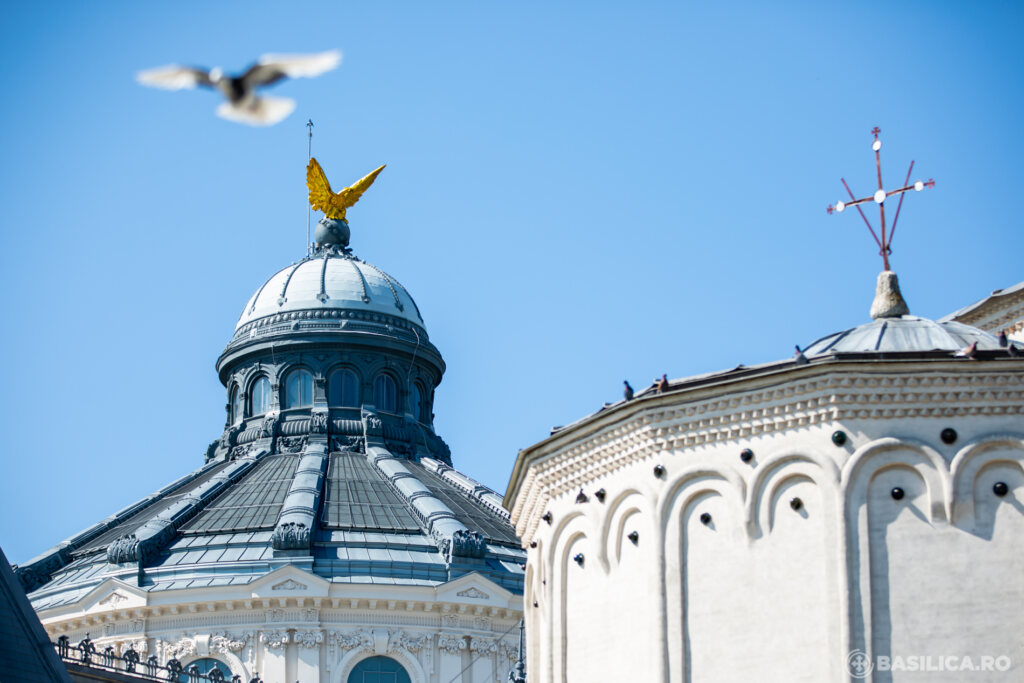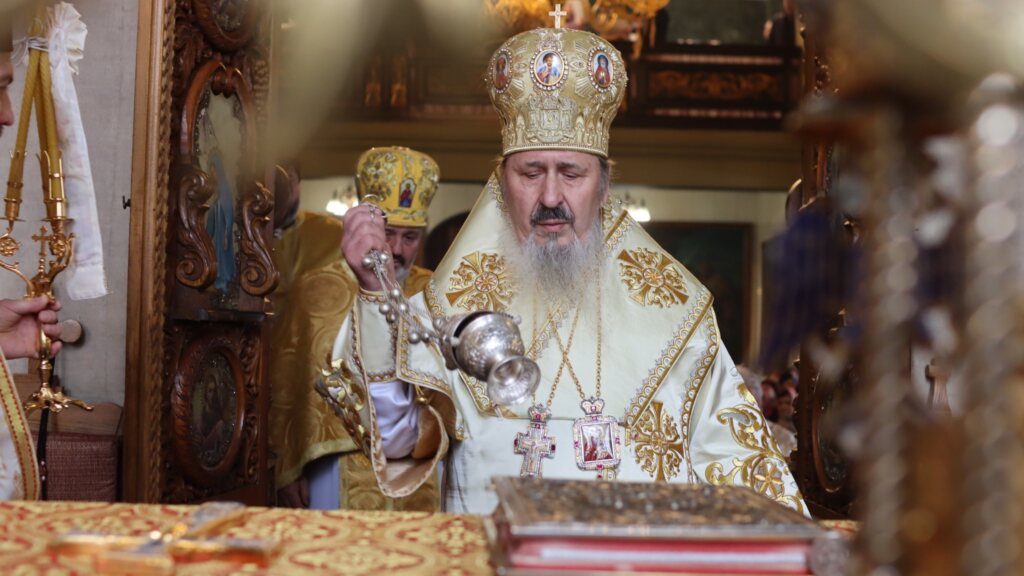On Monday, Patriarch Daniel attended the Divine Liturgy celebrated at the Chapel of the Romanian People’s Salvation Cathedral. In his homily, he spoke about the significance of the veneration of the Holy Cross in Orthodoxy, making a brief history of the events that led to the establishment of the feast of the Exaltation of the Holy Cross. The patriarch explained the spiritual meanings of the Crucifixion and why the cross is a source of light and hope.
His Beatitude Patriarch Daniel mentioned the meanings of the Holy Cross as described in the writings of the Holy Apostles. The Holy Cross is:
- The sign of God’s power
- A weapon against the devils
- An altar of sacrifice
The cross as a sign of God’s power
It refers to the power of God “to overcome sin, hatred, and wickedness through humble and merciful love” and “to endure suffering to the death and to overcome death through the Resurrection,” His Beatitude Patriarch Daniel said September 14, 2020.
“This power of the humble, patient love of Christ on the cross is the power that prepares His resurrection. Because Christ offered himself completely to God as a man, God gave to this humble and obedient humanity of Christ the resurrection, that is, eternal life,” His Beatitude explained.
“The Holy Cross is not a simple sign. It is the power of Christ’s love concentrated in this sign. We do not worship wood and metal, but Christ, who was crucified on the cross,” said the Patriarch of Romania.
The cross as a weapon against the devils
“Proud and disobedient demons urged the Jews to crucify Christ, believing that He would respond to violence with violence, with malice to malice,” the patriarch said. “But Christ the Lord, with perfect patience and perfect humility, did not respond with malice to malice and forgave those who crucified Him. He responded with merciful love.”
“His great humility and long-suffering overcame the proud and disobedient demonic powers,” Patriarch Daniel added.
The cross as an altar of sacrifice
The cross “is the highest altar of sacrifice,” on which, according to St. Paul, the Saviour Jesus Christ brought Himself to the Father as the Supreme Sacrifice. By willingly sacrificing Himself on the Cross, the Saviour “entered, once and for all, into the Holy of Holies in heaven, and reconciled God and humans, and gave to humankind the Kingdom of Heaven, eternal life,” Patriarch Daniel explained.
“In every Orthodox Church, the Holy Cross is fastened to the Holy Table in the altar where the Holy Eucharist is celebrated, reminding us that we receive the Body of the crucified and risen Christ,” His Beatitude added.
The luminous cross, inseparable from the Resurrection
During his homily, the Patriarch spoke of the spiritual significance of the Cross of Christ: “After His Resurrection from the dead, Christ bears in His hands and on His side the marks of the cross, of the crucifixion, to show us that His humble and patient love remains eternal.”
The sign of the Holy Cross will appear in heaven even before the second coming of the Saviour Jesus Christ, as St. Matthew the Evangelist notes.
“This prophecy shows us that the heaven and earth we know now will be transformed into a new heaven and a new earth, where there will be no more tears and no more death. And Christ the Lord will enlighten the New Jerusalem, the new heaven and the new earth, with the power of the love of His glory. ”
“Therefore, the Holy Cross, in Orthodoxy, is not painted dark, but luminous, because it is also the symbol of the resurrection of Christ,” said the patriarch. “Therefore, even on Easter night, when the priest proclaims the Resurrection of Christ, he raises the Holy Cross, adds the Easter candle and says Christ is risen and believers answer He is risen indeed,” Patriarch Daniel explained.
“So the cross in Orthodoxy is bright because it is not only the symbol of His death on the cross but also the symbol of Christ’s resurrection.”
“When we put the cross on the grave, it means that all who have fallen asleep in the Lord, in faith, are directed to the Resurrection, to the second coming of Christ in glory, When He will come to judge the living and the dead, when he will reward with great joy those who believed in Him and did His will in their lives,” the Patriarch said ending his sermon.
Holy Cross in the Orthodox Calendar
- Third Sunday of Lent: Holy Cross Sunday
- May 7: Apparition of the sign of the Holy Cross over Jerusalem
- August 1: Procession of the Holy Cross
- September 14: Exaltation of the Holy Cross
History of the apparition and exaltation of the Holy Cross
312: Emperor Constantine the Great sees the sign of the Holy Cross in the sky and dreams of the Saviour telling him that he will defeat his rival in battle if he marks the sign of the cross on the shields and flags of his soldiers.
313: St Constantine the Great issued the Edict of Mediolanum (Milan), which offered religious freedom to all citizens; it was equivalent to the cessation of persecution against Christians.
325: St. Constantine the Great convenes the First Ecumenical Council of Nicaea
Approx. 326: St. Constantine the Great sends his mother, Empress Helen, to seek the precious wood of the Savior’s Cross in Jerusalem
September 14, 328: Patriarch Macarius of Jerusalem receives the cross found by St. Helen, lifted it and showed it to the people gathered who chanted, ‘Lord, have mercy! Lord have mercy! Lord have mercy!’
September 13, 335: The new Church of the Holy Sepulcher and the Resurrection of the Lord in Jerusalem was consecrated. The next day the Holy Cross was lifted and shown to the people in the new basilica.
May 7, 351: On the feast of Pentecost, the Holy Cross appeared in the sky over Jerusalem in the form of very bright light. Many Jews and pagans became Christians.
614: Persians invade the Holy Land and bring the Cross of Christ to Persia
628: After the war started by the Byzantine Emperor Heraclius, the Cross was returned by the Persians
629: Patriarch Zacharias of Jerusalem lifted the Holy Cross again and showed it to the crowd, who sang “Lord have mercy!”
633: A large part of the wood of the Holy Cross was taken to Constantinople
Photography courtesy of Basilica.ro / Mircea Florescu
Follow us on Twitter: @BasilicaNews and @BasilicaPhotos
Thank you for reading Basilica.ro!






